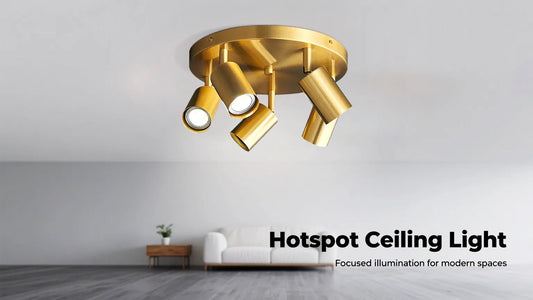A Complete Guide to E26 vs E27 Bulbs: Differences, Selection, and Practical Tips
When renovating your home or replacing lighting fixtures, have you ever been confused by bulb base types? Especially E26 and E27, which look similar but have subtle differences that directly affect compatibility. They may appear alike and serve similar functions, but these small distinctions can make or break your lighting setup. In this article, we’ll break down the key differences between E26 and E27 bulbs, their ideal use cases, and practical selection tips to help you avoid common pitfalls when shopping for lighting.
I. Basic Understanding: What Are E26 and E27 Bulbs?
First, it’s important to clarify that both E26 and E27 refer to "Edison screw base" specifications. The letter "E" stands for "Edison Screw," a universal type for screw-in bases. The number following "E" represents the diameter of the base in millimeters—meaning an E26 base has a diameter of approximately 26mm, while an E27 base is around 27mm.
| Specifications |
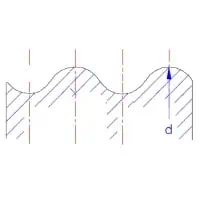 Screw Diameter at Thread Peak |
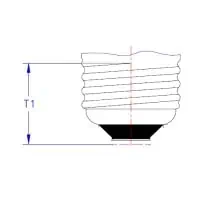 Length of Screw (MIN) |
 Insulator Cap Height |
 Live Contact Pad Width |
| E26 Bulb | 26.05mm –26.41mm | 19.56mm | 3.25mm | 9.14mm – 11.56mm |
| E27 Bulb | 26.05mm –26.45mm | 22.0mm | 5mm | 4.8mm-11.5mm |
Historically, the development of these two standards is closely tied to regional electrical systems:
• E26 Bulbs: Primarily designed for North American electrical systems (110-120V voltage). They are the standard household bulb type in countries like the United States, Canada, and Mexico, commonly found in imported American-style fixtures (e.g., vintage industrial pendant lights) and lighting components of North American-branded appliances.
• E27 Bulbs: Also known as "standard screw bases," they are compatible with the globally common 220-240V voltage. This is the dominant household standard in most countries and regions, including China, the European Union, and parts of Japan. Most regular LED bulbs and energy-saving bulbs you find in supermarkets or lighting stores are E27-compatible.
In short, the fundamental difference between E26 and E27 stems from regional voltage standards, but the core distinctions lie in base size and compatibility scenarios—these are the key factors to focus on when making a purchase.
II. Key Differences: Tell E26 and E27 Apart in 3 Minutes
Many people mistakenly believe that E26 and E27 are "only 1mm apart and interchangeable," but this can lead to loose connections, safety hazards, and other issues in practice. The table below compares the two across 5 critical dimensions to help you distinguish them quickly:
|
Comparison Factor |
E26 Bulbs |
E27 Bulbs |
|
Base Diameter |
Approximately 26mm |
Approximately 27mm |
|
Compatible Voltage |
110-120V (North American Standard) |
220-240V (Global Standard) |
|
Regions of Use |
United States, Canada, Mexico, and other North American countries |
China, Germany, France, the United Kingdom, and most other countries |
|
Application Scenarios |
Imported American-style fixtures (e.g., vintage industrial chandeliers), North American-version appliances (e.g., imported oven lighting) |
Standard household fixtures such as ceiling lights, table lamps, downlights, and wall sconces |
|
Interchangeability |
Cannot be directly used with E27 sockets (smaller base leads to looseness) |
May be forced into E26 sockets in some cases, but insufficient contact causes flickering or poor connectivity—not recommended for long-term use |
A critical warning: Interchanging E26 and E27 bulbs is not advisable! Even if an E27 bulb "fits" into an E26 socket, the poor base alignment will cause unstable electrical contact. Long-term use may lead to overheating sockets, reduced bulb lifespan, or even short circuits. Conversely, E26 bulbs will loosen frequently in E27 sockets due to their smaller size, posing similar safety risks.
III. Buying Guide: 3 Steps to Choose the Right Bulb
With a wide range of bulbs available on the market, how do you quickly determine whether you need E26 or E27? Follow these 3 steps to simplify your selection:
1. Check the Specification of Your Existing Fixture/Socket
The most straightforward method is to look for markings on your old bulb: Reputable bulbs clearly indicate "E26" or "E27" on the base. Some imported bulbs also include voltage information (e.g., "E26 120V"). If the old bulb is lost, measure the socket directly—use a ruler to measure the maximum diameter of the internal threads. Choose E26 for ~26mm and E27 for ~27mm.
2. Consider Your Usage Scenario
• If you own domestically produced fixtures (e.g., ceiling lights or bedroom table lamps commonly sold online), there’s a 99% chance you’ll need E27 bulbs—you can safely select this 规格.
• If you’ve purchased imported American-style fixtures (e.g., vintage pendant lights from Amazon Global), first check the fixture manual for voltage and base specifications. If it’s labeled "120V," it will definitely require an E26 base. In this case, buy E26 bulbs compatible with 110-120V, or use a "voltage converter + E26-to-E27 adapter" (adapters are discussed below).
3. Focus on Bulb Type and Functional Needs
Both E26 and E27 bulbs come in various types, including LED, energy-saving, and incandescent. Select based on your functional requirements:
• Energy Efficiency Priority: Choose LED bulbs (long lifespan, low power consumption—currently the mainstream for household use).
• Ambient Lighting: Opt for dimmable LED bulbs (ensure both the bulb and fixture support dimming).
• Special Scenarios: For kitchens or bathrooms, select "waterproof and moisture-proof" models (marked with IP65 or similar protection ratings). For studies or bedrooms, choose "low-blue-light" models to protect eyesight.
IV. Practical Tip: A Temporary Solution for Cross-Specification Use
What if you have an imported E26 fixture but can’t find compatible E26 bulbs? An E26-to-E27 adapter is the solution. This small accessory has an E26 base (to connect to the fixture) on one end and an E27 socket (to hold the bulb) on the other, allowing domestic E27 bulbs to work with E26 fixtures.
Note these two points when using an adapter:
1. Verify Voltage Compatibility: If the fixture uses 110-120V, even with an adapter, ensure the E27 bulb supports 110-120V. (Universal-voltage LED bulbs labeled "100-240V" work directly.)
2. Choose Certified Products: Adapters carry electrical current, so always select products with 3C certification (for China) or UL certification (for North America). Avoid low-quality adapters, as they pose safety risks.
V. Common Misconceptions Addressed
Finally, we’ve compiled answers to frequently asked questions to clear up misunderstandings:
Q1: Is there a difference in brightness between E26 and E27 bulbs?
A: No! Brightness depends on the bulb’s power (e.g., "lumen count" for LEDs), not the base type. A 10W LED bulb will have the same brightness whether it’s E26 or E27—differences only exist in base and voltage compatibility.
Q2: Can I use an imported E26 bulb directly in China’s 220V electrical system?
A: Absolutely not! E26 bulbs are designed for 110-120V by default. Directly connecting them to China’s 220V circuit will burn out the bulb instantly and may even cause a short circuit. To use E26 bulbs, you must pair them with a "220V-to-110V voltage converter," and the converter’s power rating must exceed the bulb’s power.
Q3: My fixture has an E27 socket, but I want to use a vintage-style E26 bulb. What should I do?
A: Two options: ① Buy an "E27-to-E26 adapter" (note the direction: E27 base connects to the fixture, E26 socket holds the bulb). ② Choose vintage-style bulbs with E27 bases—domestic lighting manufacturers now offer a wide range of vintage E27 bulbs, so there’s no need to insist on E26.
Conclusion
While the differences between E26 and E27 bulbs seem minor, they directly impact safety and compatibility. Remember the core principles: Check the socket specification, match the voltage standard, and avoid cross-specification use. Whether replacing an old bulb or pairing a new fixture with a bulb, following the steps of "check markings → measure size → consider the scenario" will help you choose the right bulb easily, ensuring your home lighting is both safe and comfortable.
If you have other questions about bulb selection, feel free to leave a comment below—let’s discuss!



